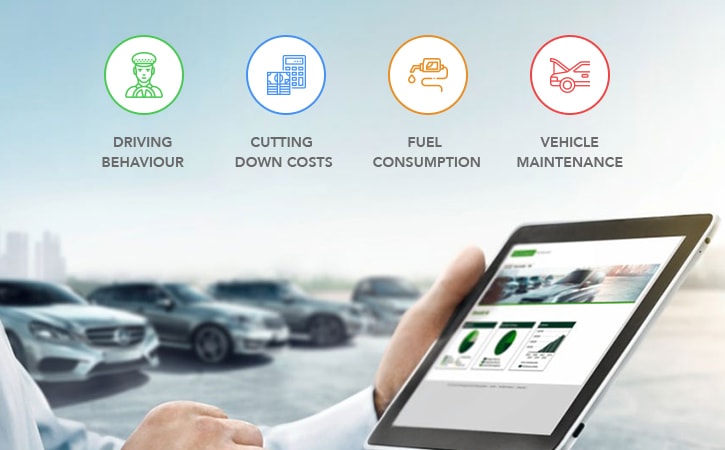6 ways geofencing in fleet management improves productivity

Fleet management companies are among the primary industries benefiting from geofencing systems.
How geofencing can be used in fleet management to improve fleet productivity:
- Reduce administrative burden and increase efficiency.
Supervising fleets entails numerous time-demanding tasks, such as check-in phone calls, sending package ETA alerts to customers, and monitoring hours of service (HOS) for CMV drivers.
Geofencing can help you minimize administrative burden and increase the efficiency of day-to-day operations.
For instance, rather than calling (and distracting) your drivers to ask about their ETAs, set geo-boundaries around their loading spots, rest areas, destination, etc., and receive automated reports.
This minimizes the administrative burden of manually monitoring vehicles, eliminates the need for micromanagement and multiple phone calls, and ensures your drivers are on track.
Because of reduced administrative burden and increased efficiency, fleet managers may have more time for other business-critical tasks.
- Simplify time and payroll management.
If you pay your drivers on an hourly basis, geofencing can help you track their working periods automatically.
You can create virtual time stamps and cards, integrated with geofences. When your staff passes through your digital, geofenced perimeters, your fleet management software can start recording the working hours.
This gives you accurate logs of when drivers appeared on their job sites and for how long they worked.
Once it’s time for payroll processing, your admin and finance team can calculate payroll with more accuracy, without having to deal with a lot of paperwork and manual record checking.
- Plan smarter and improve asset deployment.
Geofencing in fleet management relies on GPS tracking, so the software can update you in real time and help you enhance your operational planning and scheduling.
With valuable geofencing and GPS data, you can see where your vehicles are, estimate their ETAs, adjust your proposed trips, and keep your shipping and other activities right on time.
- Increase security and theft prevention.
Geofencing helps you enhance your fleet asset tracking and security because you receive alerts when your vehicles go beyond the approved routes and virtual boundaries.
If your vehicles are not where they should be, you will get a real-time geofenced alert. Then you can check into the incident to see whether this was authorized or not, if there was a valid reason for the deviation, or if your assets were stolen.
Real-time geofenced alerts can enable you to take timely action.
- Improve compliance and fleet safety.
Geofencing can also help you improve compliance and fleet safety. One way is by initiating your traffic restriction management.
In many urban places, authorities limit using large commercial vehicles to specific hours or completely forbid particular vehicle types from operating on certain roads.
Geofences or boundaries installed around these restricted areas can notify you when your trucks are about to enter off-limits areas. In addition, drivers can also avoid any other dangerous areas determined by you.
You can receive timely alerts and re-route your drivers. This can help you improve compliance and the safety of your fleet.
- Improve customer satisfaction.
Finally, when you use geofencing in fleet management, you can improve customer satisfaction by providing them timely alerts and keeping them in the loop with up-to-date ETAs.
You can use GPS tracking and geofences to identify vehicles close to your clients’ locations for faster deliveries. Moreover, you can also set up geofence alerts — checkpoints for drivers — that keep you updated on how far your drivers are to the delivery point.
Relay that information to your customers for a better customer experience and higher customer satisfaction.


